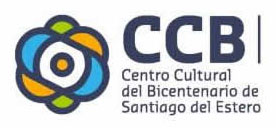The Ramón Gómez Cornet Fine Arts Museum
The Ramón Gómez Cornet Fine Arts Museum exhibits its heritage of works made by Santiaguenian, national and European artists. This exhibition aims to transmit our knowledge and to show the poetics and the productions that have influenced our culture since the beginning of the 21st century.
This set of artworks analyzes how the ideological perspective of art helps us to define our culture and represents us and our nation. We are proud of the contributions Gómez Cornet and La Brasa Cultural Association made from Santiago del Estero.
In this exhibition, three themes can be distinguished: paintings by European artists, the structure of national art, and national artworks.
The European artists’ paintings belong to the academic art movement that left a mark on the classic influence over Argentinian artists’ education between the 19th and the beginning of the 20th century.
The second theme renders the formation of national art during the first half of the 20th century. In the 80s, our country held a dominant idea: foreign art was favored over national art. Then, Nationalism was built over national and provincial basis: regional identity, mestizos (people with both indigenous and Europeans ancestors), and national landscape. La Generación del Centenario, a group of writers, and La Brasa Cultural Association contributed to this movement. Among these paintings, Ramón Gómez Cornet’s art stands out.
The third theme includes national artists’ paintings made in the 1950s. These paintings are a heterogenic group, similar to modern art movements. These are characterized by their political and social commitment in the quest for articulating “art and life” and “art and politics” during this decade.
Ramón Gómez Cornet (1889-1964) creates his first works inspired in the avant-garde European paintings from the beginning of the 20th century. In Argentina, he is considered a pioneer in this form of artistic expression thanks to his modern cubist art exhibition in 1921.
A decade later, he changes his mind and starts painting something completely different: men, women and children from his nation. At the same time, he becomes one of the most recognized Argentinian painters.
“The more you know, the best you paint”. His painting “La Urpila” is proof of it. This painting won the 36th Edition Gran Premio Adquisición (1946-1947) from Salón Nacional de Artes Plásticas (Plastic Arts National Hall). This work, a local modern figure, is a summary of his career. Its muddy colors represent the influence of his European studies. The girl with a mestiza face shows dignity and modesty despite her poverty and loneliness.
Spirituality, tenderness and sobriety are highlighted in his paintings, reflecting an aristocracy that claims a national identity.
French, Spanish and even Argentinian artists working in Europe show academic realism in their artworks. This classical school was imitated by many other artists who replicated this European model in the 1980s. These painters valued foreign art as a sign of civilization and cultural supremacy.
National paintings from 1950s. This heterogeneous group of paintings are similar to modern art movements.
During the early 1900s, people believed that Argentina was only a shallow land, that we had only one kind of landscape and that European culture was better than ours. Ricardo Rojas, writer, breaks with this idea of “pampa-patria”.
National artists adopted this nationalism and included our nature in their paintings. Their works render the Argentinian Northern region, the Andes region and how mestizo and indigenous legacy live in us.
This was trending in the 1950s and some authors define it as Americanism or National Art. This heterogenic discourse combined our traditions, our landscapes and our culture with the new aesthetic cutting-edge models of that time.


